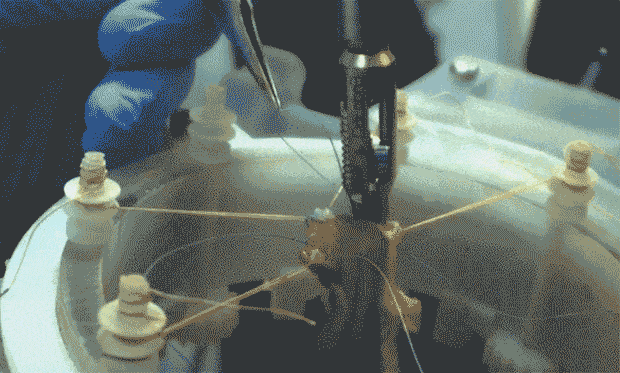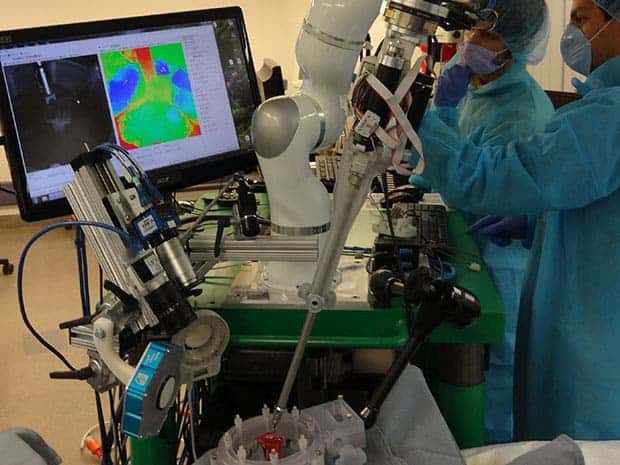Human dexterity and patience are limited resources, and even the best surgeons are sometimes faced with their limits. A robot, however, doesn’t tire and can theoretically cut and suture in places the human hand can’t ever reach. Thanks to robots, surgery has gone a long way their introduction in the ’80s making operations safer and less invasive. Now, surgical robots are starting to migrate from assisting to leading roles, which is where experts say they will really shine.

At the forefront of this medical revolution is the Smart Tissue Autonomous Robot, or STAR. Heralded as the very first fully autonomous surgical bot, STAR stitched up a pig’s small intestines all by itself with no instructions from doctors. What’s more, STAR scored better than the human surgeons who had to perform the same task.
Paging Dr. STAR
STAR was developed by Johns Hopkins University researchers — a team that includes computer scientists, robotic engineers, and medical professionals. They say that STAR isn’t meant to replace surgeons (yet). Rather, STAR is a pioneering work that demonstrates that supervised autonomous robot surgeons can get the job done.
“Even though we surgeons take pride in our craft at doing procedures, to have a machine that works with us to improve outcomes and safety would be a tremendous benefit,” said Peter Kim, associate surgeon in chief at Children’s National Health System in Washington.
Until recently, surgery bots have been used as a surgeon’s ‘third arm’ — an extension of human dexterity. The leading product in the field right now is the da Vinci system, which is mainly used to perform hysterectomies and prostate removals. The da Vinci is so sensitive that it can even stitch a grape but, at the end of the day, it’s a human surgeon who is in control while seated comfortably at a console viewing a 3-D image of the surgical field.
Few have dared leave complex soft tissue surgery at the hand of robots. That’s because soft tissue moves and changes shape in a seemingly unpredictable manner, and a surgeon always needs to adapt and respond to make a quality suture.
STAR can respond well because it has ‘surgeon’s eyes’. Near-infrared fluorescent (NIRF) are placed inside the soft tissue, like the intestines in our case, then STAR’s NIRF camera can track those markers to keep focus on its target. Although it was programmed by humans to work based on the best surgeon’s techniques, STAR made its own surgical plan and adjusted it as the tissue moved and wiggled.

To be fair, STAR had a bit of help during the trials. The trial is called intestinalanastomosis, and involves stitching an intestine that’s been cut through. It’s like repairing a garden hose, said Ryan Decker, the senior engineer on the team. Both STAR and human surgeons had to perform the task on ex vivo tissue in the lab, as well as on in vivo tissue in an anesthetized pig. In 40 percent of the trials, STAR was assisted by a human offering guidance of some sort, like pulling a loose thread and such. In 60 percent of the trials, STAR was fully autonomous.
“The mode we’re operating under is supervised autonomy,” said team member Axel Krieger of Children’s National. “The surgeon is overseeing and has the opportunity at any time to stop the robot and take over.” At a moment when tissue is being pierced or a delicate transition is imminent, he said, “I’m sure they wouldn’t be comfortable going off and taking a coffee break.”
KIM likens STAR with autonomous cars, like Tesla Motor’s autopilot feature.
“Now driverless cars are coming into our lives,” Kim said for IEEE. “It started with self-parking, then a technology that tells you not to go into the wrong lane. Soon you have a car that can drive by itself.”
The research appeared in the journal Science Translational Medicine.






